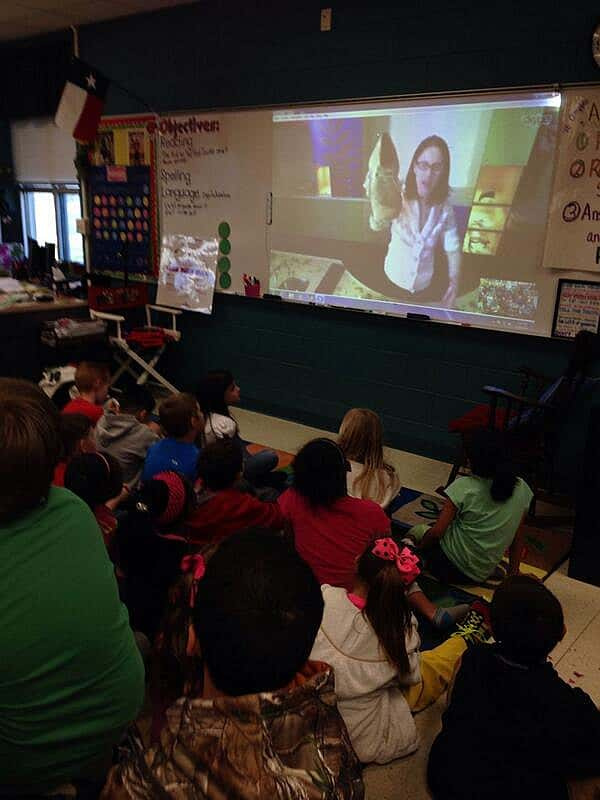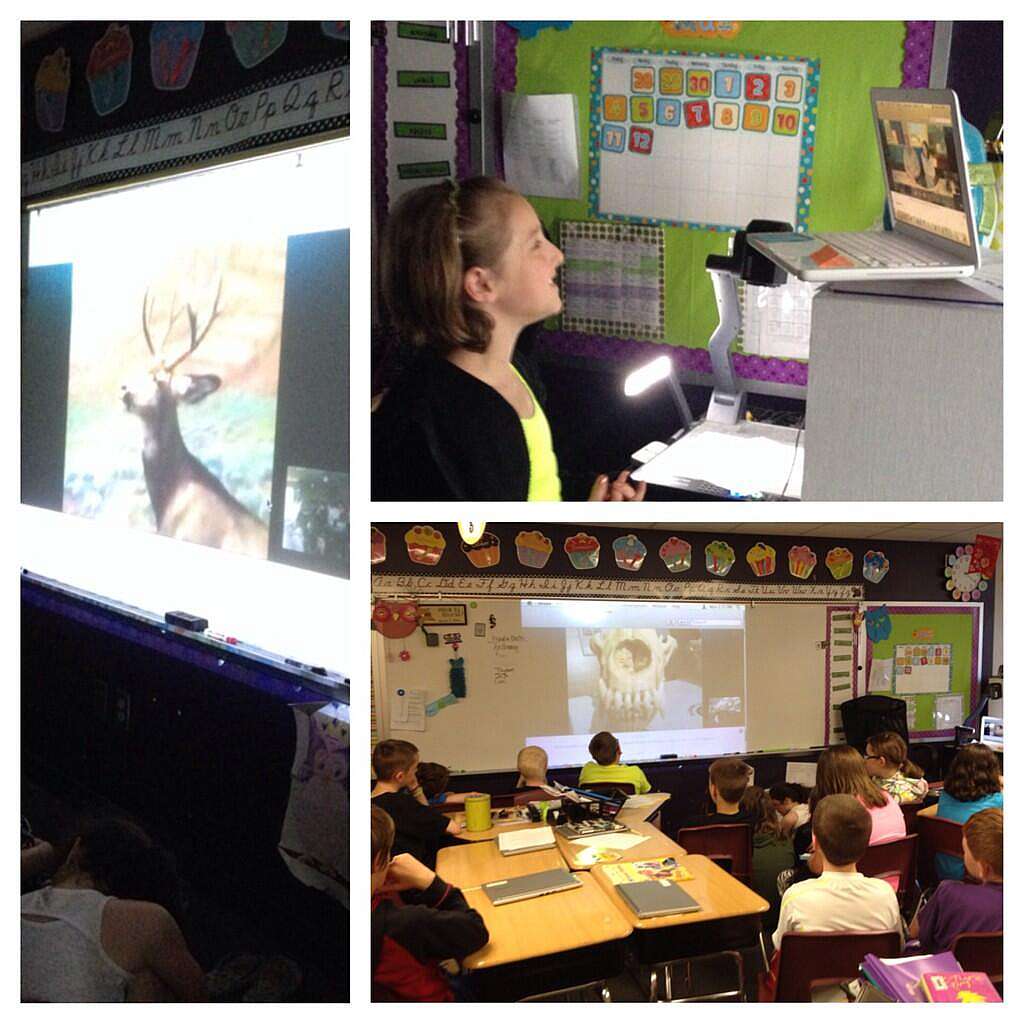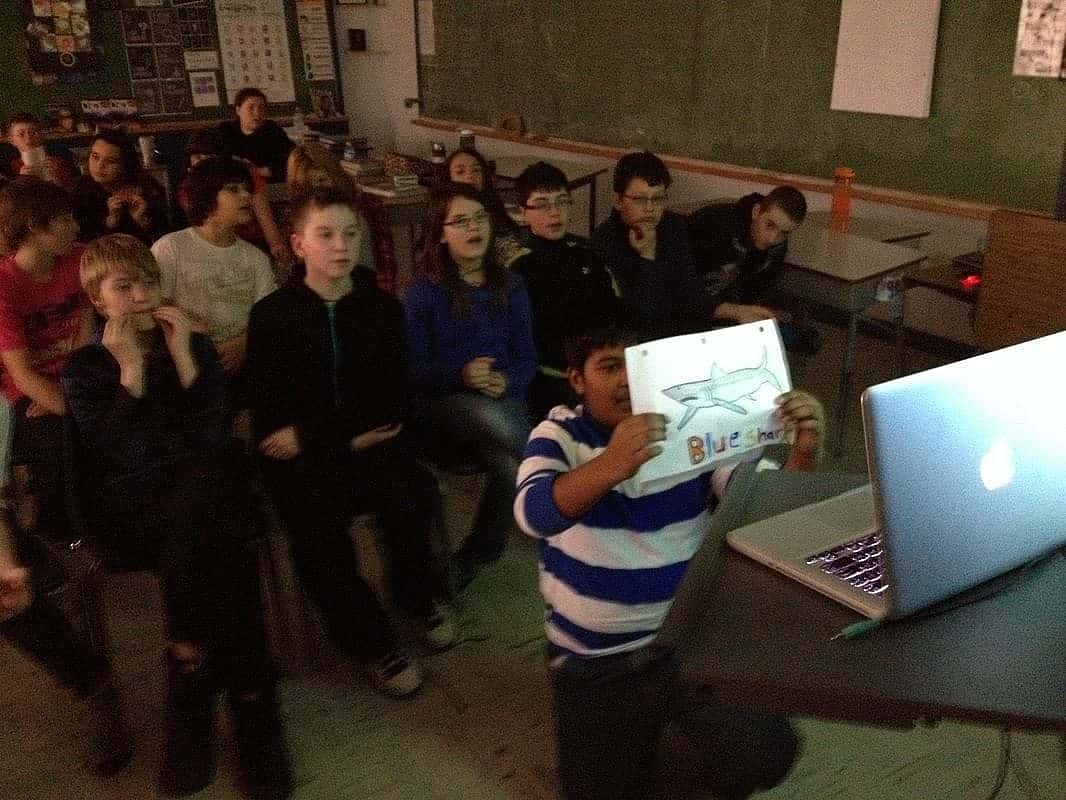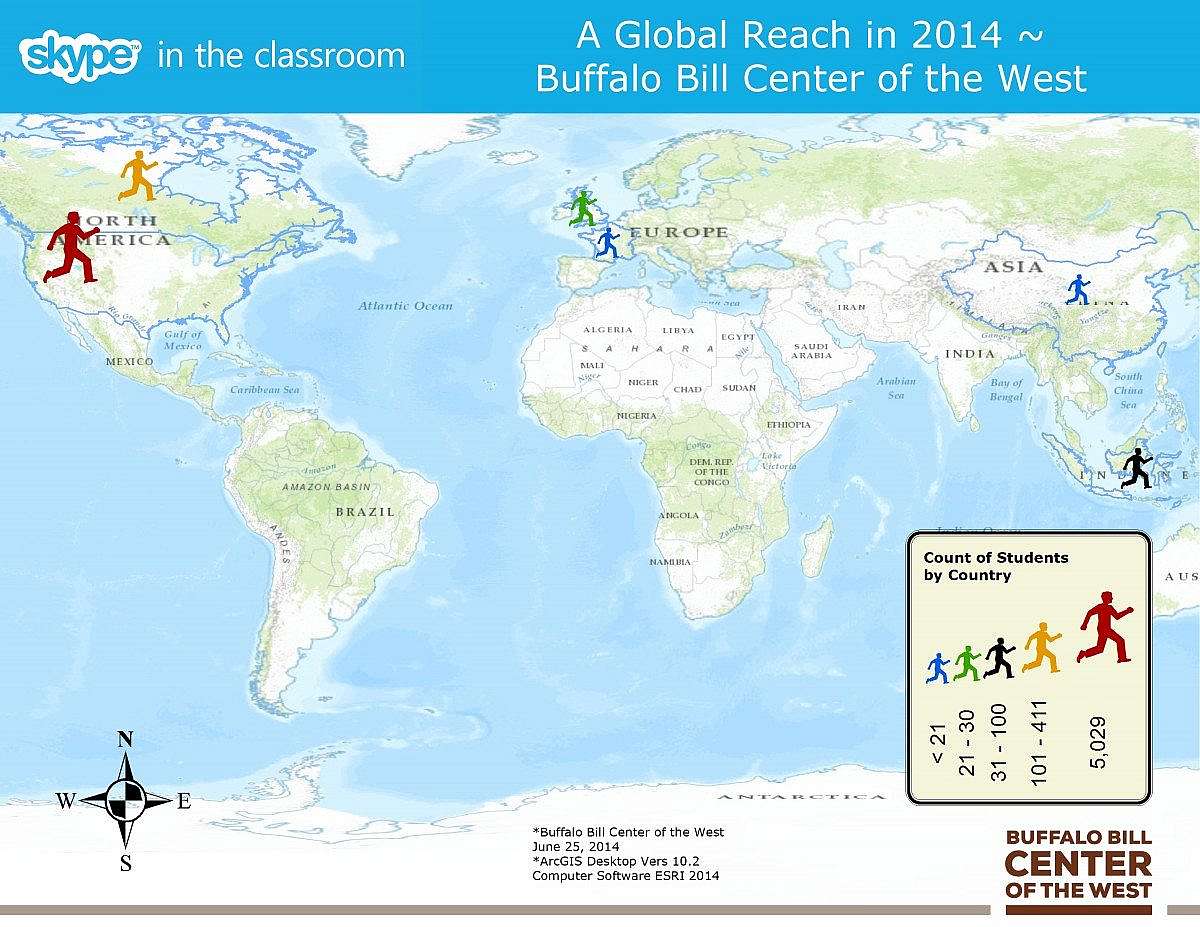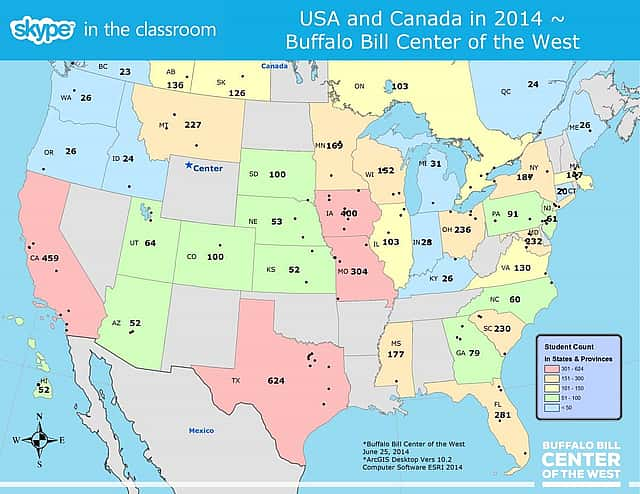
Skype in the classroom Lessons
NOTE: The Buffalo Bill Center of the West’s former “Skype in the Classroom” program are now “Virtual Field Trips” offered on a variety of platforms. Click here for the most up-to-date information.
It has been just over a year since we launched and presented the first of our Skype in the classroom lessons—what a fantastic year it has been. Our lessons have opened doors, windows, hidden hallways—OPPORTUNITIES. These opportunities allow dialogue, spark interest, and inspire the youth of our world to connect to the American West. Upon reflection, our Skype in the classroom lessons are three fold: the lessons we teach, the lessons we learn, and the lessons by the numbers.
Skype in the Classroom: Lessons We Teach
Over the course of the past year, the Center has launched three Skype in the classroom lessons. Our lessons meet national standards across disciplines, and are participatory—students, teachers, and presenters engage in a dialogue that is enriching to all involved. Presenters also introduce students to hands-on learning objects, allowing the audience to glimpse our collections up close.
Trappers, Traders, Trailblazers: Mountain Men of the Rocky Mountain West
Mountain men were rugged individuals who traveled, explored, and lived in the Rocky Mountains in search of valuable beaver pelts. During this lesson, students explore the adventurous culture of the West during the time of the trappers, traders, and trailblazers. They also discovered the tools and techniques that mountain men used to survive in the wilderness.
Students uncover the natural history of beavers as well as why their pelts were so valuable to mountain men. Finally, they contemplate just what it would take to be a mountain man, the skills he needed, and all the accoutrements he required for survival.
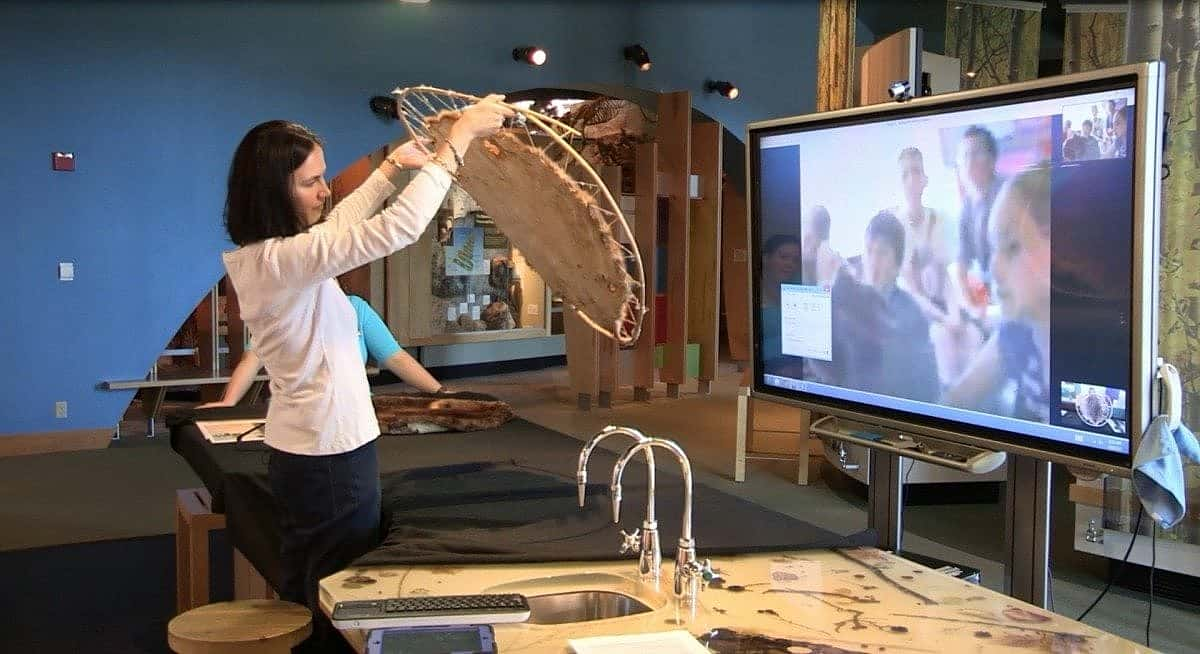
Stories and Cultures of Plains Indians and Buffalo
Imagine not being able to buy your clothes, tools, food, and household items at a store! During this lesson, students challenge themselves to think about how they would meet their needs using the natural environment around them. They discover that long ago many Plains Indian tribes had to use the natural resources around them to survive. This lesson introduces students to a traditional Plains Indian story about a mischievous young man who gets his head stuck in a buffalo skull. Then students discover the culture of Plains Indians and buffalo as the presenter introduces them to our hands-on collection pieces. After this lesson, students answer the question: How did Plains Indians use the fur, hide, sinew, bones, and even bladder of the buffalo in their everyday lives?
Amazing Animal Adaptations
During this lesson, students discover the basic habitat needs of animals and explore how living things adapt to seasons and environments. Students journey through four habitats in the Greater Yellowstone Ecosystem—the alpine, forest, mountain meadow, and plains/basin environments. We visit our immersive museum exhibits and highlight animals in each of these unique habitats. Then students compare the adaptations of animals like a grizzly bear, beaver, and raptor to those of animals in their region. How do animals adapt to their environment both physically and behaviorally? We will uncover the answer during this lesson.
Skype in the Classroom: Lessons We Learn
Students and teachers are not the only individuals who learn during our Skype in the Classroom lessons—we do too! We have learned so much from the classes we have Skyped with throughout the world.
We learn about different states, provinces, countries, cultures, animals, climates, and so on by just allowing students and teachers the time to share with us. This exchange always amazes and inspires me to keep learning.
- We learn that technology helps the Center reach far, far, far beyond the bricks and mortar of our Center.
- We learn that it is important to talk slowly when Skyping with international students. Sounds simple enough, but we always need to be aware that English may not be a class’s primary language.
- We learn to always stop and listen. Questions student ask help us gauge the effectiveness of our lesson. The answers to questions we ask of students help us to do the same.
- We learn that schools, both urban and rural, all benefit in learning new things.
- We learn that these lessons are always fun and rewarding!
Skype in the Classroom: Lessons by the Numbers
What a year it has been! What started as a pilot program last May has turned into one of the Center’s priorities. Through our Skype in the classroom lessons, we have doubled the number of students we impact. Just how many students did we teach through this virtual world? More than 5,600 students throughout the world. This breaks down to 175 lessons in 123 schools in six countries!
The maps below show just how large our impact was!

This success would not have been possible without our partnership with Skype in the classroom. This program is also made possible through a generous donation by J Bar 9 Ranch, Cody, Wyoming.
Written By
Megan Smith
Megan Smith is the K-12 Curriculum and Digital Learning Specialist at the Buffalo Bill Center of the West. She manages the direction, development, and implementation of all K-12 curriculum and digital learning initiatives including Skype in the Classroom, online interactive curriculum and resources, STEM Innovation Lab and programming, and onsite K-12 programming. Megan is an award-winning author and editor of non-fiction science, social studies, reading, and religion books, teacher guides, ancillary products, and online digital supplements for Pre-K through high school. Projects include basal configurations and products used for integrated and digital curriculum. She was most recently a contributing writer for the Webby Award winning National Geographic Education Resource Library. She earned a B.S. in Environmental Science from Indiana University and a M.S. in Ecology from the University of New Haven.
